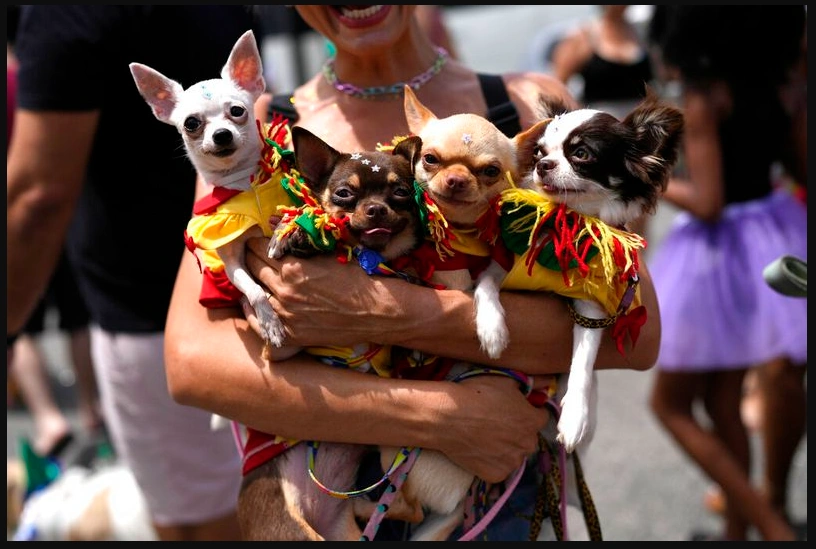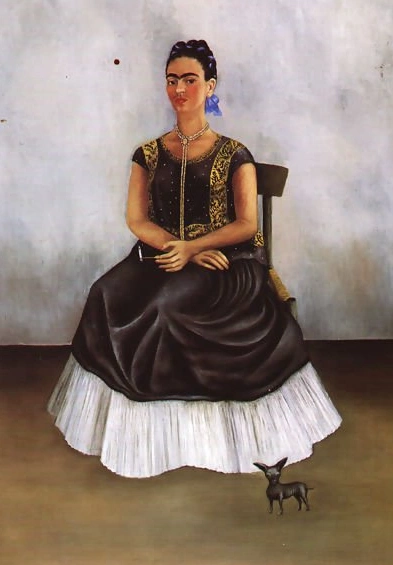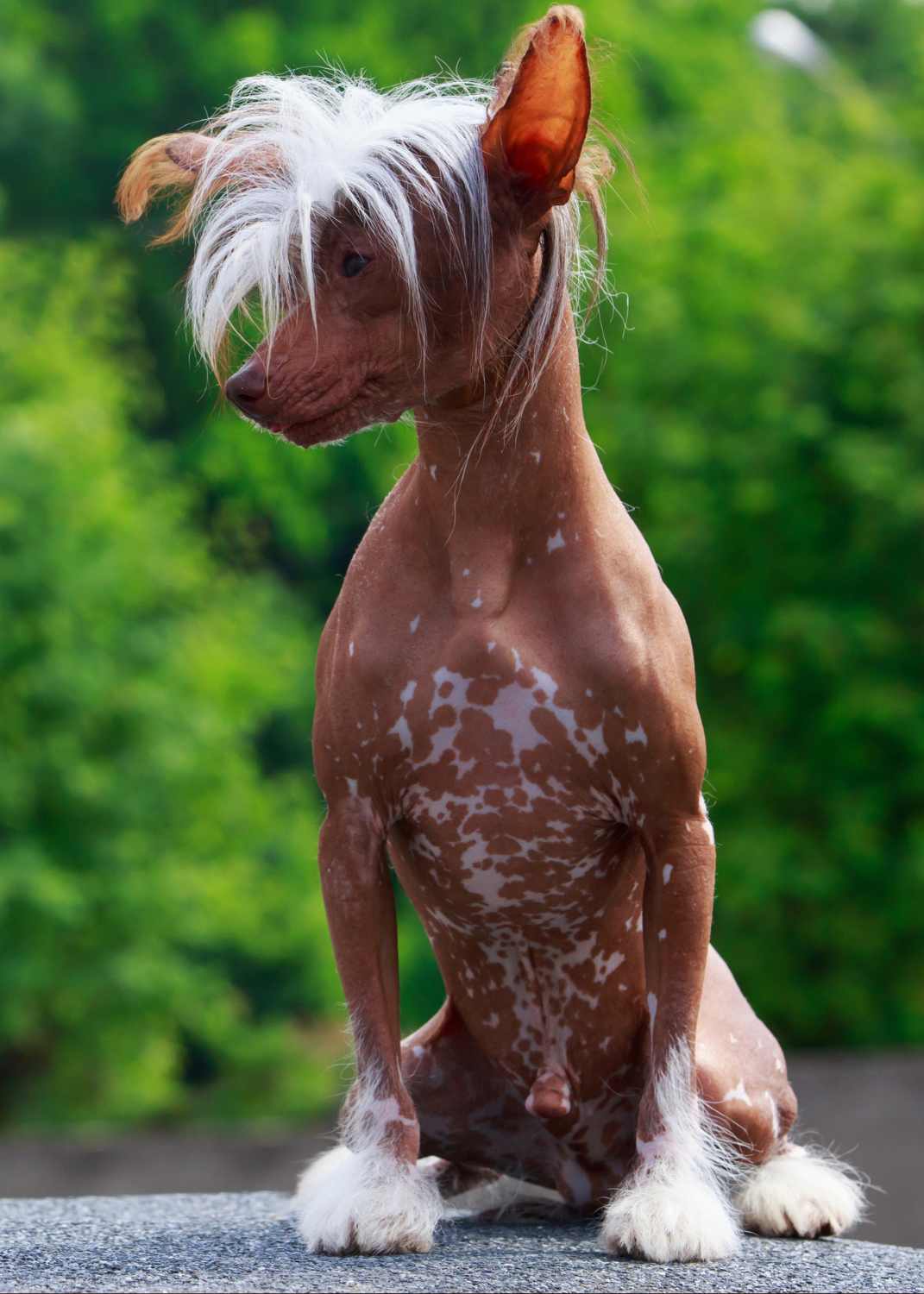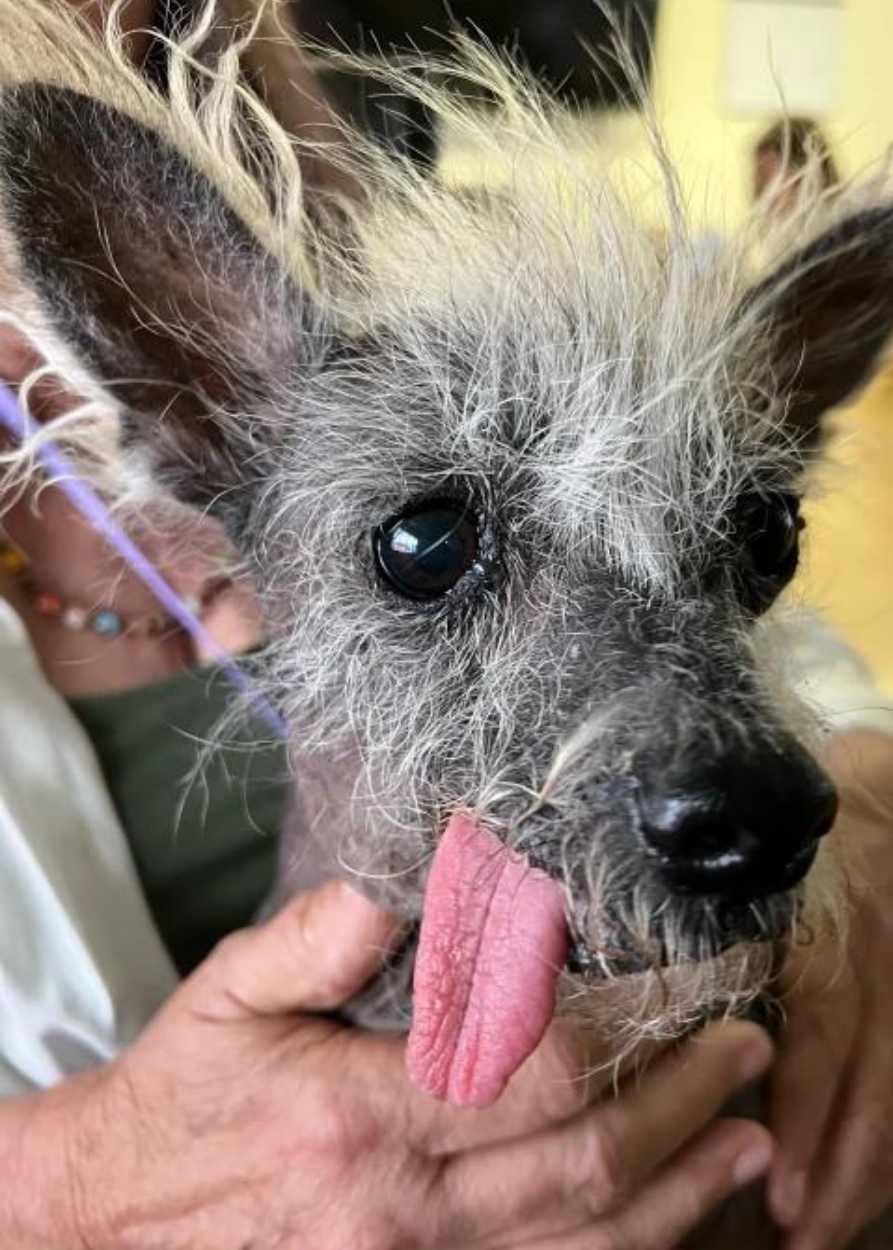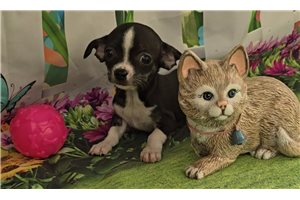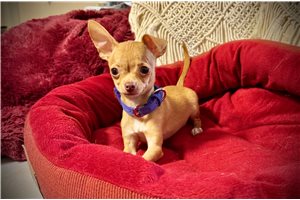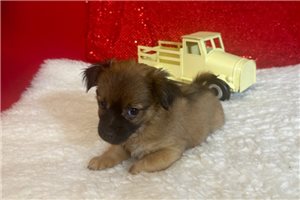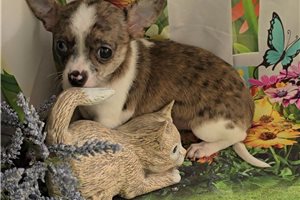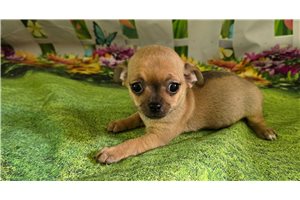Mexico is a country full of diverse people, landscapes – and dog breeds. As we approach the Cinco de Mayo holiday, you may not pause to think about Mexican dog breeds while on a quest to find the perfect margarita and attempt to eat as many tacos as you can handle. It’s never too late to learn about Mexico’s native canines between taco orders!
Mexican dog breeds have ancient and modern roots reflecting a deeply entwined history with the country’s pride of their unique breeds. Explore Mexico's diverse canine heritage with our guide to top Mexican dog breeds, from the spirited Chihuahua to the majestic Xoloitzcuintli.
A Guide to Mexican Dog Breeds
While Mexico’s dogs do not share the same character traits or appearance, they are all beloved diverse dog breeds of Mexico. Discover the charm and character of Mexico's iconic dog breeds.
Chihuahua
The Chihuahua pops into your mind first when you think of the quintessential Mexican dog breed. A spunky, confident Chihuahua is the smallest dog breed in the world weighing six pounds or fewer. The smallest full-grown Chihuahua on record was only as long as a dollar bill! Chihuahua puppies have delicate bodies and large, bat-like ears, but their sassy yet sweet personalities make them a favorite for families who want a tiny, spitfire companion.
Chihuahuas are the most diverse type of Mexican dog breed as far as their appearance. Chihuahuas have long or short hair and apple-shaped or deer-shaped heads, all under the same breed standard. They come in teacup sizes for those wanting an even smaller companion.
The Chihuahua breed's origins are debated, with one theory tracing back to the Toltec people of Mexico. They held a small, mute dog called the Techichi in high regard. Later, the Aztecs elevated these dogs to symbols of nobility and spirit guides. Another theory suggests a mix of Techichi lineage with tiny Chinese dogs brought by Conquistadors, leading to the modern Chihuahua named after the northern state in Mexico. Regardless, these dogs have been cherished companions for a thousand years.
Chihuahuas gained fame in the late 1800s when affluent Americans vacationing in Mexico brought them back as souvenirs. Imagine being gifted a strange, small dog rather than a magnet or a postcard! Their popularity surged further when recognized by the American Kennel Club in 1904, and they became a sensation at dog shows and were kept as fashionable pets.
Today, Chihuahuas are a national symbol of Mexico. In America, Chihuahuas have secured a prominent place at #32 out of 200 dog breeds in the AKC's list of Most Popular Dog Breeds of 2023. They are among the most popular dog breeds in several major cities due to their tiny size, versatility, spitfire personalities, and affection shown to their owners. In fact, the Chihuahua is the most popular breed in 21 different states according to US News & World Report and the APPA National Pet Owners Survey. Countless movies, TV shows, and advertisements have used Chihuahuas on screen, print, and social media as canine actors, to promote brands, and delight fans with their silly, sassy antics.
Xoloitzcuintli
The Xoloitzcuintli, pronounced "show-low-eats-QUEENT-lee" and sometimes called a “Xolo,” has its origins deeply rooted in Mexico, serving as the revered dog of the ancient Aztec gods as well as the Toltecs and Maya. Its historical association with healing powers places it among the most unique dog breeds. Esteemed by the Aztecs for their believed ability to fix various ailments, from arthritis to toothaches and even insomnia, Xoloitzcuintli were highly respected for their supposed healing abilities. Xolos were also believed to ward off evil spirits and were often buried with people to protect their journey to the Underworld.
Named after Xolotl, the Aztec deity symbolizing the god of death, lightning, and fire, Xoloitzcuintli dogs link the modern world with its ancient past. Mexico celebrates the Xoloitzcuintli as the National Dog of Mexico and a symbol of resilience.
The Xoloitzcuintli stands apart not only for its name but also for its distinctive appearance. Xolos are commonly known as the Mexican Hairless Dog, but they also come in a furry variety of colors like palomino, white, bronze, dark brown, and more. The hairless dogs are a result of a recessive genetic mutation. This breed can be one of three different sizes: Toy, miniature, and standard, weighing 10-55 pounds and standing 10-23 inches tall. A Xoloitzcuintli’s forehead features a wrinkled brow, making them look deep in thought with an intelligent expression, and a sturdy, graceful body. Xolos are loyal, affectionate, and calm, make excellent watchdogs due to their alert, protective nature, and have boundless energy.
"Itzcuintli Dog with Me," Frida Kahlo, 1938
The Xolo also has a prominent place in Mexican art. Famous Mexican painter Frida Kahlo was known for her depictions of bleeding hearts, daggers, and skulls, conveying feelings of loneliness and isolation due to her severe injuries from a car crash and inability to have children. She surrounded herself with several pets, including a “Itzcuintli” dog as the Xolo was then called. Art critics note Kahlo seems uninterested and distant from her dog in her 1938 self-portrait, "Itzcuintli Dog With Me.” However, the true meaning is speculated because Kahlo held her beloved pets as a source of comfort and companionship, blurring the lines of the true interpretation of what the Xolo represents.
Chinese Crested
People may gravitate towards cute dogs and fawn over them, but what about those with “only a face a mother could love?” A Chinese Crested may be described as “adorably ugly,” a contradiction perhaps not quite understood until you see one.
Chinese Crested dogs are certainly unique in the canine world. Standing under 13 inches tall and weighing 8-12 pounds, Chinese Crested dogs are unlike any other dog breed. They have thin skin that sunburns, hare-like paws, a shock of white hair sprouting from the tops of their heads, wear “socks” on their feet, and are some of the only dog breeds with sweat glands. Chinese Crested dogs come in Hairless and Powderpuff varieties. They are non-shedding dogs that do not develop a body odor. Owners can expect their Chinese Crested to lead a long, fulfilling lifespan of 13-18 years.
You might wonder, “Why is a dog featured on a Mexican dog blog with the wrong country of origin in its name?” Despite its name, the purebred Chinese Crested dog breed we know today did not originate in China like a Pekingese or Shar-pei. Rather, they are an offshoot of dogs Chinese merchants likely brought aboard ships in the 16th century, where they were prized for controlling pests. When they arrived in Mexico, these dogs were further integrated into local communities, where they adapted to the climate and lifestyle. Chinese Crested predecessors bred with native Mexican dogs, creating its unique personality and interesting looks. Today, while their name may hint at a distant origin, the Chinese Crested dog is firmly entrenched in Mexican culture, serving as a loyal and affectionate companion to people outside of Mexico.
Scooter the Chinese Crested Winner, Photo Courtesy of Sukimo Moots
Chinese Cresteds have an unusual honor – the breed has won the annual World’s Ugliest Dog competition several times throughout the contest’s history spanning half a century. The contest is held yearly at the Sonoma-Marin Fair in Petaluma, California. Before you think this competition is mean-spirited, its purpose is to highlight the imperfections that make all dogs unique, accounting for the dog’s personality and ability to connect with the audience rather than just by looks. Head Judge Brian Sobel notes that people may repel at the sight because a Chinese Crested looks like a “hybrid between a rat and a dog.”
The most recent dog to win the 2023 contest is Scooter the 7-year-old hairless Chinese Crested who has overcome several obstacles to lead a fulfilling life. He faced euthanasia because he was born with deformities. His joints and feet grow backward, and his white crest of hair stands tall on his otherwise bald head. Scooter’s adorable tongue drapes down the side of his mouth, even when his mouth is closed. Scooter uses a special cart to get around. When he does not have his cart, he uses his behind as a tripod of sorts to scoot around, the source of his name. He can also balance on his two front feet to “walk!”
Chamuco
The Chamuco is an extremely rare Mexican dog with a troubled past despite its potential to be a devoted family dog. It was bred in the 1970s for illegal fighting purposes. It’s commonly known as the Mexican Pit Bull with a name meaning “devil” or “mischievous” in Spanish reflecting its unpredictable temperament. The Chamuco may remind you of some familiar breeds because it shares some genetic traits with the American Pit Bull Terrier and American Staffordshire Terrier. Because there is no official breed standard, their personalities can vary widely. However, like most Pit Bull breeds, some well-trained and socialized Chamucos are known for their loyalty to their families and protective instincts, especially around children. Physically, Chamucos have an athletic, muscular build and come in a variety of coat colors, including white, brown, and black.
Calupoh, the Mexican Wolfdog
The Calupoh is a rare Mexican dog breed and is actually a hybrid half-dog, half-wolf. Also called the Mexican Wolfdog, the Calupoh is one of the rarest dog breeds in the world, and you have probably never heard of one! Despite its rarity, the Calupoh's popularity is steadily growing among dog enthusiasts drawn to its unique appearance, intelligence, and unwavering loyalty.
This breed stands out among the unique Mexican dog breeds because it is a relatively new breed with ancient origins. In the 1990s, breeders wanted to recreate this ancient Aztec breed which had been on the brink of extinction due to habitat loss and breeding with other dog breeds with only a few remaining purebred dogs scattered across remote regions of Mexico. Remains of over 70 “loberro” dogs that lived 100 BCE to 1500 AD were found in caves and temples. These remains served as the basis for reviving the breed to get it as close to the original dog the Aztecs revered.
Recognized by the Federación Canófila Mexicana (FCM) in 1999 as the third official Mexican dog breed, the breed continues to gain recognition both nationally and internationally. Today, the Calupoh represents Mexico's rich biodiversity and ancient traditions.
Historically, Calupohs served various roles within Aztec society, including companionship, hunting, guarding, and even ceremonial sacrifice. They were considered symbols of strength, loyalty, and spiritual connection. Now, they continue to be kept as loyal companions, working guard dogs, and livestock protectors, but have thankfully dropped any involvement in ceremonial sacrifices!
You may think a half-wolf canine would look like a Siberian Husky, but there is room in the canine kingdom for genetic variety. Only weighing up to 20 pounds, the Calupoh’s long, lanky legs have no problem running at breakneck speeds. Their strong skulls, heads, and necks, pointed muzzles, erect ears, black, white, or silver double coats, and almond-shaped yellow or dark eyes define the breed’s physical traits. Calupohs have an even-tempered personality and make wonderful family dogs as long as they are socialized from a young age.
Let’s “Taco Bout” Pawrade Puppies
We love dogs from all origins and offer puppies for sale from vetted breeders nationwide. All puppies come with a 3-year health guarantee, 30 days of MetLife insurance, a health record, up-to-date vaccines, and lots of love! You’ll never be scammed thanks to the secure transaction management system we utilize for all of our payments at Petpay.com. While we offer the whole gamut of Chihuahuas, from apple-headed hairless varieties to deer-headed hairy puppies, check with our Puppy Concierge team to see if we have rare Mexican breeds available. We look forward to hearing from you! Now get back to the margaritas and tacos!

